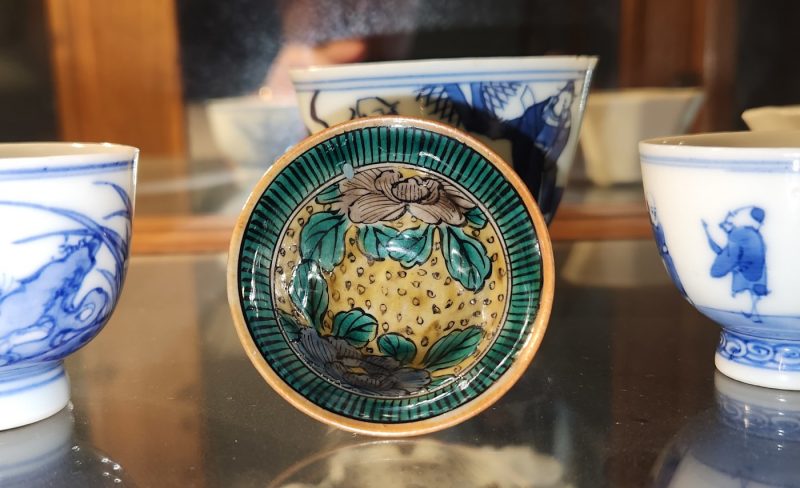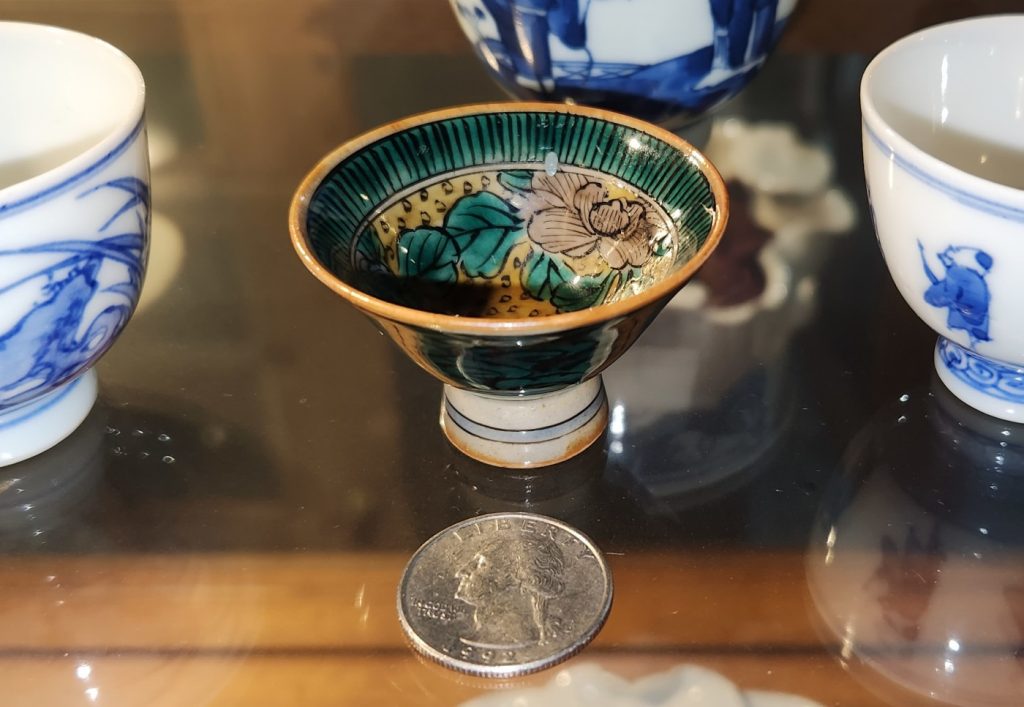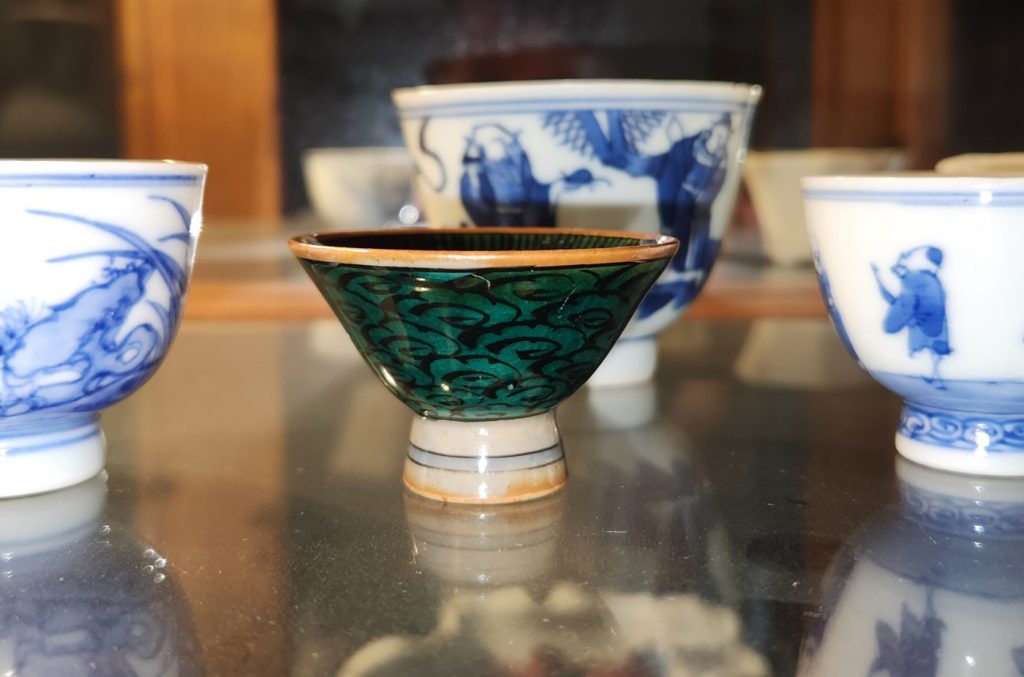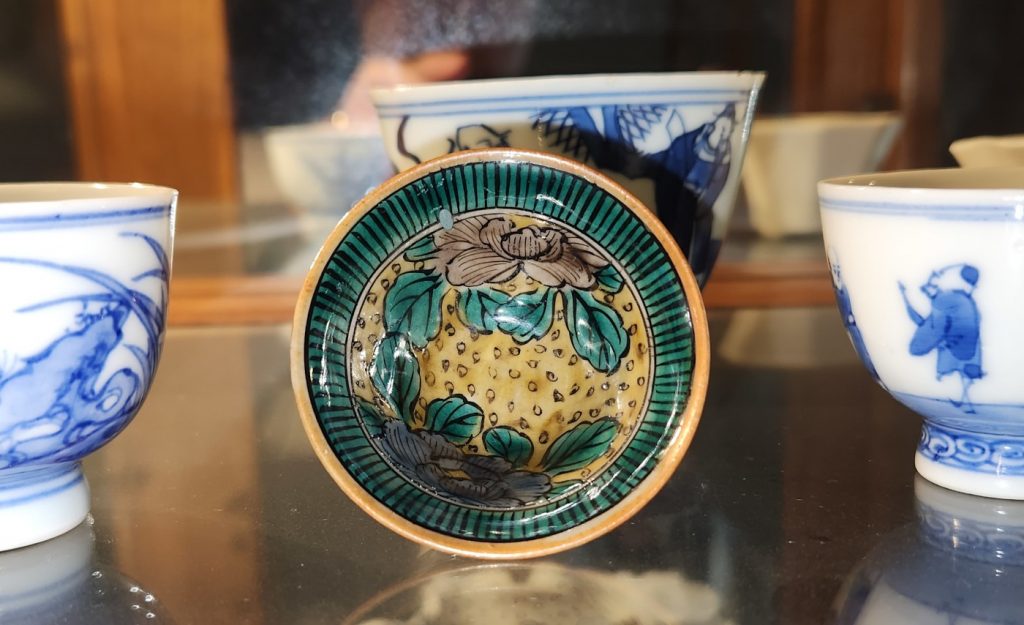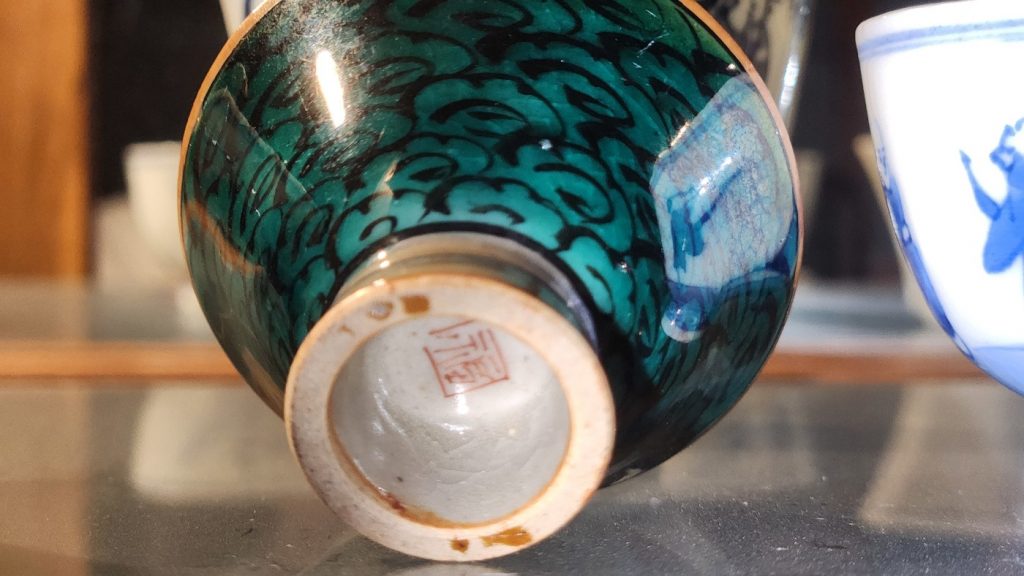Aote Style Kutuani Ware Sake Cup
If you have read one, or more, of the other discussions on this site, where we try to determine the origin or age or authenticity of a piece of ceramic, you know there is a disclaimer. We present the information here not as an exhaustive method of determining answers to the authenticity or other aspects, but rather as an educational investigation as to why it might be one or the other of many opinions. With that out of the way, lets look at our next discussion piece:
Above is a very small sake cup (31 mm tall by 52 mm diameter). Its colors, decoration and the composition of the clay, suggests it is a 17th century Ko Kutani sake cup in the Aote or Aode or Ao style. This sake cup was recently obtained by Only Clay. The cup did not come in a wooden box proclaiming its origins.
We do spend a lot of time on each piece we discuss and share our findings, along with citations and sources. This cup will likely get a lot of research time. Feel free to leave a comment concerning this cup.
Japanese porcelains from this period, in this style, are exceedingly rare. Generally, the surviving pieces are larger plates and bowls. Authenticated Ko Kutani is found almost exclusively in museums and important private collections.
Brief History of Kutani Porcelain
There continues to be some controversy over the origins of the 17th century pieces. The early thinking is they originated in the village of Kutani in what was Kaga Province. The current scholarship suggests it was actually produced in Arita (now in Saga prefecture). There is little documentation about it, but the general belief is the kiln began operation around 1630 and continued until about 1700. It is unclear exactly why the kiln ceased operations. ( https://en.wikipedia.org/wiki/Kutani_ware )
Pottery with this distinct style would not be seen again for over 100 years. Then in the 1820’s, in the Kutani area, there was a revival of Ko Kutani wares. In 1824 the Yoshidaya kiln began operation. It would operate only until 1830, producing what is now call Yoshidaya style Kutani. ( https://musubikiln.com/blogs/journal/what-is-kutani-yoshidaya-style ). In our opinion, the difference between the styles is that the early style, or “Ko Kutani” was more masculine, dark, heavy and geometric, while the Yoshidaya style was lighter and more artistic, with more animals and people.
Detailed Discription of Ko Kutani Sake Cup
Height: 31 mm
Diameter: 52 mm
Weight: 24 grams
Mark: Loosely executed, over glaze iron red FuKu mark inside a single square.
Condition: Very good. Some short shallow scratches to the outside. The glaze at the bottom of the well is slightly dulled. Crazing to inside of foot and outside of cup. There is a small drip of blue grey enamel in the well.
Description: A small Japanese sake cup of conical shape resting on a tall, slightly splayed foot. The lower portion of the well of the cup is decorated with two skillfully executed peonies, one with a thin aubergine over glaze enamel and a second with a thin blue over glaze enamel. The leaves of the peonies are covered in a rich, dark, emerald green, over glaze enamel. The peonies are on a ground of mustard yellow enamel, decorated with small circles.
All decorations are outlined in black. The peonies are separated from the upper part of the well by a double black line. Above this double black line is a wide band, covered in dark, transparent, emerald green enamel over closely drawn, vertical black lines that extend to a single black line boarder near the rim. The rim is covered in a thin, dark yellow or brown glaze.
The outside of the cup is decorated with a swirling cloud motif, done in black and covered all over with a deep, lustrous, transparent, emerald green enamel.
The foot is white or clear glaze and decorated with what appears to be an under glaze, pale blue band, bordered by black lines.
The inside of the foot and base of the cup are covered in a clear glaze and the base has an iron red FuKu mark, described above.
The exposed paste looks more like fine stoneware than porcelain. The paste appears to have a high iron content and has fired to a light tan color and a dark brown at the glaze interface.

